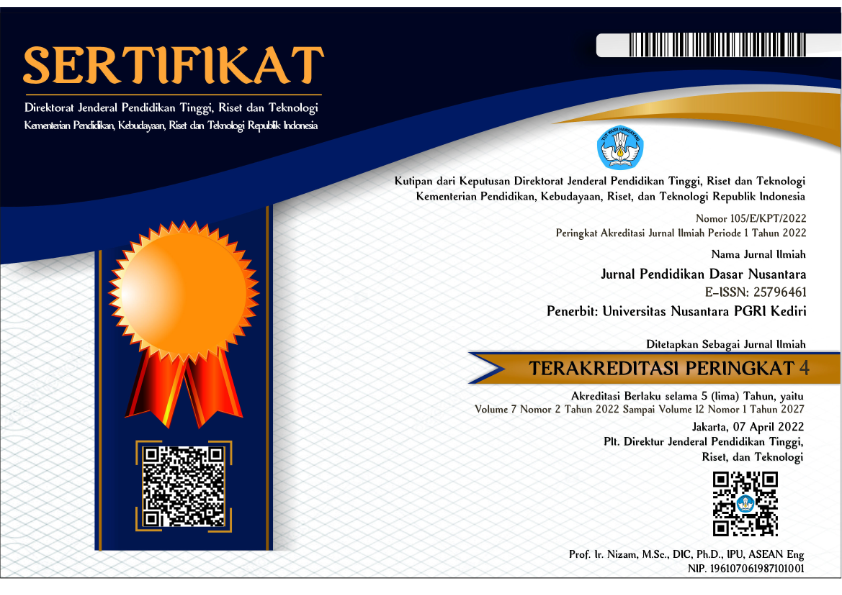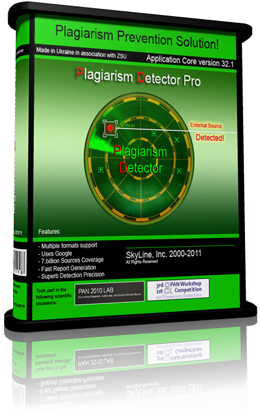PENINGKATAN KREATIVITAS MAHASISWA DALAM PEMANFAATAN BARANG-BARANG BEKAS PADA MATA KULIAH MEDIA PEMBELAJARAN
Abstract
Abstract: Instructional media course which aims to develop the potential of studentsthrough the concept of learning media (non-ICT), as a medium of learning ICT there is aseparate subject. The use of media in the classroom learning relevant to optimize thelearning process. One of the subjects of learning media competence is to produceinstructional media based on relevance, basic competence, materials and characteristics ofstudents with the use of goods that exist around. This research is a class action that aimsto improve the creativity of students in the use of second-hand goods in the course of nonICT learning media. The subjects of this study were students of the second semester ofthe third level which consists of 40 students. Stages of research include planning, action,observation, and reflection in three cycles. Actions taken in the form of student creativityin the use of second-hand goods in the course of learning media. Data were collectedthrough interviews, observation, test, attitude scale, field notes and documentation.Triangulation data is done to avoid the subjectivity of the observer. The success rate ofthis study when the average observation creativity-average students gain rata ≥ 2,4 oneach indicator with good criterion, which was obtained from each end of a cycle or aquestionnaire if the average gain ≥ 70% with good criteria, derived from each end of thecycle. The results showed that the students' skills in the use of second-hand goods as amedium of learning through aspect 4 P which includes creative personalities, press /impulse, the creativeprocess, and creative products that are more focused on processsteps keratif with stages Preparation, incubation, illumination, and Verification at thecycles 1, 2 and 3 continued to increase.
Abstrak: Matakuliah media pembelajaran yang bertujuan mengembangkan potensimahasiswa melalui konsep media pembelajaran (non ICT), karena media pembelajaranICT ada mata kuliah tersendiri. Pemanfaatan media pembelajaran yang relevan dalamkelas dapat mengoptimalkan proses pembelajaran. Salah satu kompetensi matakuliahmedia pembelajaran adalah menghasilkan media pembelajaran berdasarkan relevansi, kompetensi dasar, materi dan karakteristik siswa dengan pemanfaatan barang-barangyang ada disekitar. Penelitian ini merupakan penelitian tindakan kelas yang bertujuanuntuk meningkatkan kreativitas mahasiswa dalam pemanfaatan barang-barang bekas padamata kuliah media pembelajaran non ICT. Subyek penelitian ini adalah mahasiswa tingkatII semester III yang terdiri dari 40 mahasiswa. Tahap-tahap penelitian meliputiperencanaan, tindakan, observasi, dan refleksi dalam tiga siklus. Tindakan yang dilakukanberupa kreativitas mahasiswa dalam pemanfaatan barang-barang bekas pada mata kuliahmedia pembelajaran. Data dikumpulkan melalui wawancara, observasi, tes, skala sikap,catatan lapangan dan dokumentasi. Trianggulasi data dilakukan untuk menghindarisubjektivitas dari observer. Tingkat keberhasilan penelitian ini apabila rata-rata observasikreativitas mahasiswa memperoleh rata-rata ≥ 2,4 pada setiap indikatornya dengan kriteriabaik, yang diperoleh dari tiap akhir siklus atau angket jika memperoleh rata-rata ≥ 70%dengan kriteria baik, yang diperoleh dari tiap akhir siklus. Hasil penelitian menujukkanbahwa keterampilan mahasiswa dalam pemanfaatan barang-barang bekas sebagai mediapembelajaran melalui aspek 4 P yang meliputi pribadi kreatif, press/dorongan, proseskreatif, dan produk kreatif yang lebih difokuskan pada langkah proses keratif dengantahapan Persiapan, inkubasi, iluminasi, dan verifikasi pada siklus 1, 2, dan 3 terusmeningkat.
Downloads
Downloads
Published
Issue
Section
License
Authors who publish with this journal agree to the following terms:
1. Copyright on any article is retained by the author (s)
2. The author grants the journal, right of first publication with the work simultaneously licensed under a Creative Commons Attribution License that allows others to share the work with an acknowledgment of the work’s authorship and initial publication in this journal.
3. Authors are able to enter into separate, additional contractual arrangements for the non-exclusive distribution of the journal’s published version of the work (e.g., post it to an institutional repository or publish it in a book), with an acknowledgment of its initial publication in this journal.
4. Authors are permitted and encouraged to post their work online (e.g., in institutional repositories or on their website) prior to and during the submission process, as it can lead to productive exchanges, as well as earlier and greater citation of published work.
5. The article and any associated published material is distributed under the Creative Commons Attribution-ShareAlike 4.0 International License




























